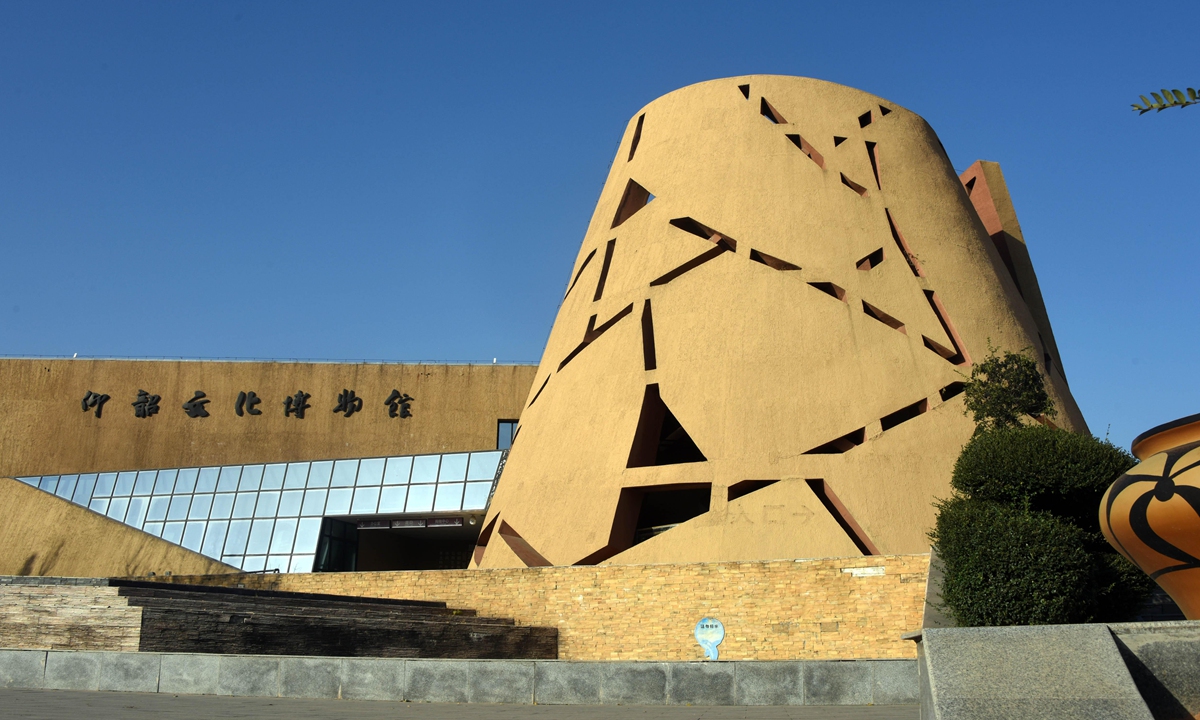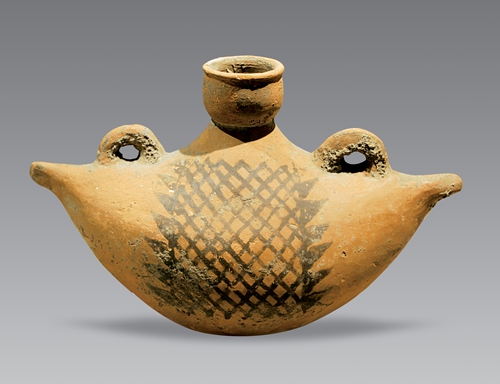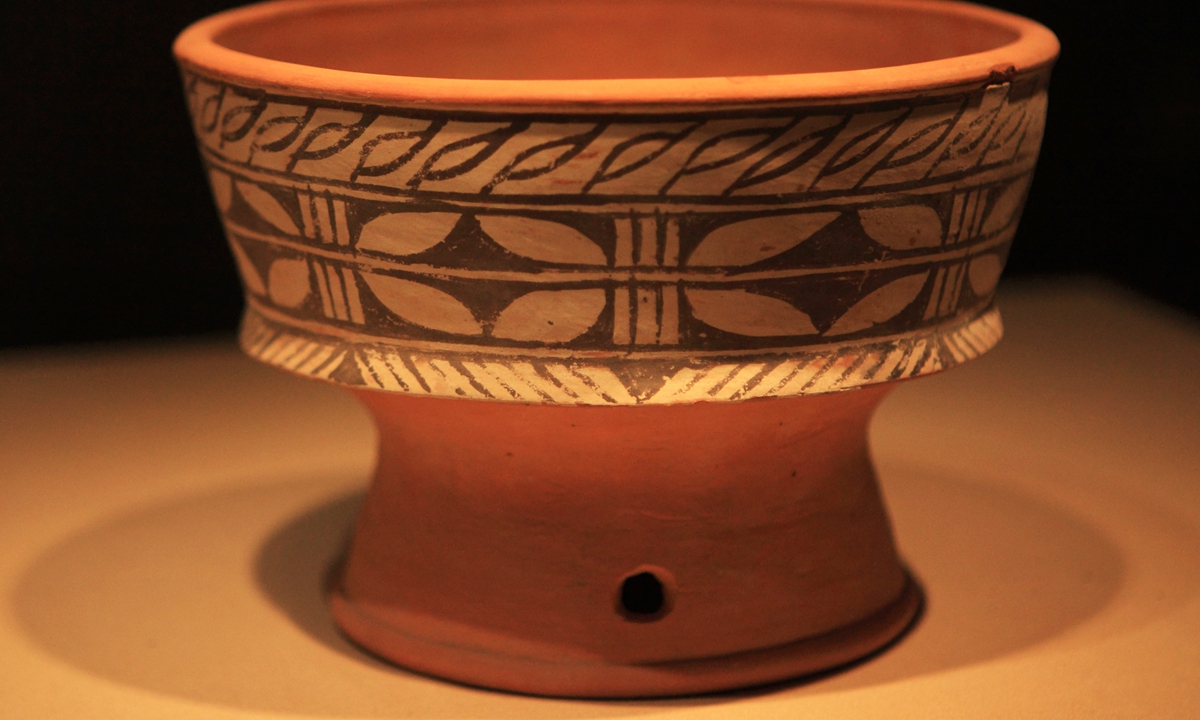Ancient Yangshao Culture: 100 years of modern Chinese archaeology
Foundation of a civilization

Photo: Courtesy of China's National Cultural Heritage Administration

The Yangshao Culture Museum in Central China's Henan Province Photo: VCG

Unearthed painted pottery from the Yangshao Culture Photo: VCG

Unearthed painted pottery from the Yangshao Culture Photo: VCG
China's National Cultural Heritage Administration on Friday held a work report briefing about the Yangshao Culture, one of the earliest Neolithic cultures identified in China, to commemorate the centennial of the establishment of modern Chinese archaeology as well as research into the Yangshao Culture.The Yangshao Culture, which can be traced back to 4,900BC to 2,900BC, is a Neolithic culture that existed extensively along the Yellow River in China. The culture flourished mainly in what is today Northwest China's Shaanxi Province, North China's Shanxi Province and Central China's Henan Province.
Wei Xingtao, a research fellow at the Henan Provincial Institute of Cultural Heritage and Archaeology, said at the briefing that the new archaeological discoveries about the Yangshao Culture in Henan Province related to alcohol, silk, starch granules and yeast as well as architectural relics and silkworm tooth carvings are representative presentations of the complexity of the Yangshao Culture and society, indicating that the middle and late stages of the Yangshao Culture may coincide with the early stages of Chinese civilization.
The year 2021 marks the 100-year anniversary of the birth of modern Chinese archaeology, which started with the discovery of the Yangshao Culture.
In 1921, Swedish geologist Johan Gunnar Andersson discovered a collection of paleontological fossils at the Yangshao site, the first excavated site of this culture in Yangshao town, Mianchi county, Henan Province, hence the name the Yangshao Culture.
Andersson later discovered similarities between the Yangshao Culture's unearthed painted pottery and the painted pottery of Central Asia. as well as those of the Tripolye Culture in Tripoli in the northwest of the Black Sea, and proposed that the Yangshao Culture was originated from the West, on which most experts in the academic community express disagreements.
"We carried out archaeological work in Romania, the center of Tripolye Culture, and found that the colored pottery of the two cultures indeed share some similarities. However, the development paths of the two cultures are completely different. After the turbulent integration of the Yangshao Culture, it became an important part of the Chinese civilization. "After the decline of Tripolye Culture, the region had no noticeable social development before the Roman Empire," said Li Xinwei, an archaeologist at the Institute of Archaeology of the Chinese Academy of Social Sciences.
He told the Global Times that it is still unknown if the two cultures had any early cultural exchanges and that they are currently applying for a project to further explore the relationship between the two.
Ma Zhiming, an archaeologist from the Shaanxi Academy of Archaeology, pointed out at the briefing that painted pottery belonging to the Yangshao Culture incorporated human faces, fish, birds and fangs as the main themes, which reflects their spiritual beliefs.
Li echoed that the fish and bird patterns on an artifact unearthed from the Sanxingdui Ruins in Southwest China's Sichuan Province are also important historical relics in the Yangshao Culture.
According to Chinese archaeologists, the Yangshao Culture was the first integration of Chinese prehistoric culture. "In the future, we might not limit Chinese history to the Zhou, Qin and Han dynasties (1046 BC-AD 220), but will trace it back to the Yangshao era," said Ma.




